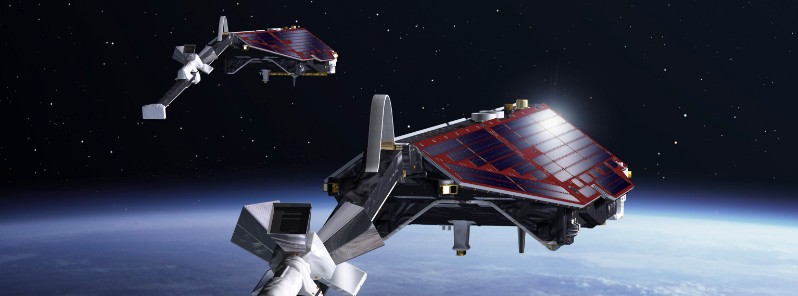Swarm-B on possible collision course with space debris

US armed forces’ Joint Space Operations Center (JSpOC) has identified a close approach for ESA's Swarm-B satellite forecast to occur at 23:10 UTC on January 25, 2017. The forecast miss distance is just 361 m (1 184 feet), and this triggers a risk above the 1/10000 risk threshold.
The chaser object is a piece of Cosmos-375 fragmentation debris. It is very small, having a radar cross-section of just 0.02 m2 (0.21 ft2).
“This corresponds to a size of about 15 cm (5.9 inches),” says Tim Flohrer, the space debris analyst on duty this week at ESA’s Space Debris Office. “With 130 observations in the database, it’s a very well tracked object, and we’re pretty confident that we know its orbit with a high degree of accuracy.”
Nonetheless, there are uncertainties in its orbit, on the order of 1000 m (3 280 feet) in the along-track direction. This means it could easily come much closer than 361 m (1 184 feet) to Swarm-B, and potentially even collide.
This morning at 08:00 UTC, on the advice of the Space Debris Office, Swarm Spacecraft Operations Manager Frank-Jürgen Diekmann at ESOC called the first meeting to assess the situation and devise an initial plan for conducting a possible maneuver to boost Swarm-B out of the way. The meeting included the flight control team, a flight dynamics specialist and the space debris team.
The Space Debris team are now waiting for updated predictions from JSpOC late today. In the meanwhile, the flight control team and flight dynamics specialists are starting to plan a collision avoidance maneuver (CAM), which, if deemed necessary, will have to be conducted within the next 36 hours.
Swarm-B satellite is part of the ESA's 3-spacecraft Swarm mission. Swarm-B is now orbiting at about 500 km (310 miles) altitude, at an inclination of 88 degrees.
Launched in 2013, the trio of Swarm satellites are measuring and untangling the different magnetic fields that stem from Earth’s core, mantle, crust, oceans, ionosphere and magnetosphere. Together, these signals form the magnetic field that protects us from cosmic radiation and charged particles that stream towards Earth in solar winds.
Featured image: The three identical Swarm satellites were launched together on one rocket in 2013. Two satellites orbit almost side-by-side at the same altitude – initially at about 460 km (285 miles), descending to around 300 km (186 miles) over the lifetime of the mission. The third satellite is in a higher orbit, at 530 km (329 miles), and at a slightly different inclination. Credit: ESA–P. Carril, 2013.

Commenting rules and guidelines
We value the thoughts and opinions of our readers and welcome healthy discussions on our website. In order to maintain a respectful and positive community, we ask that all commenters follow these rules.